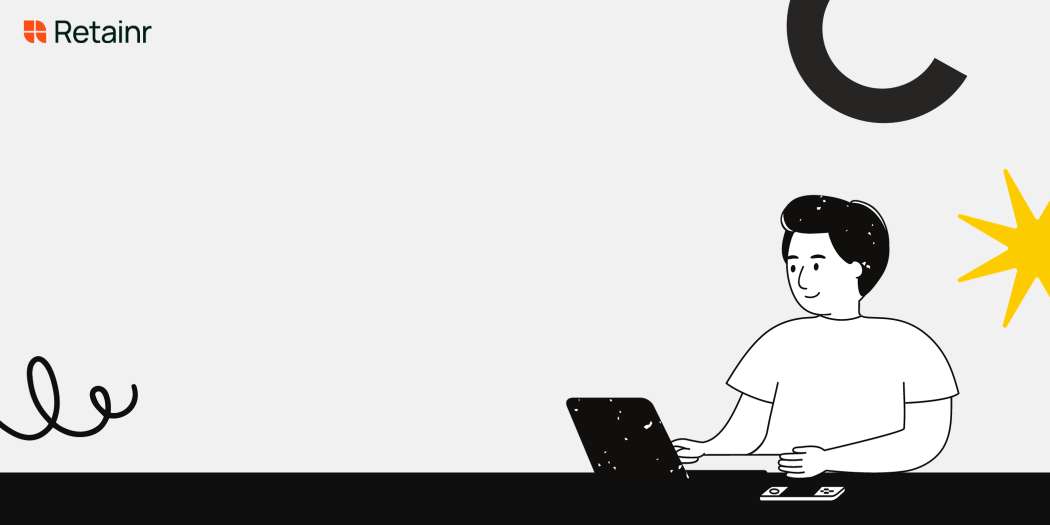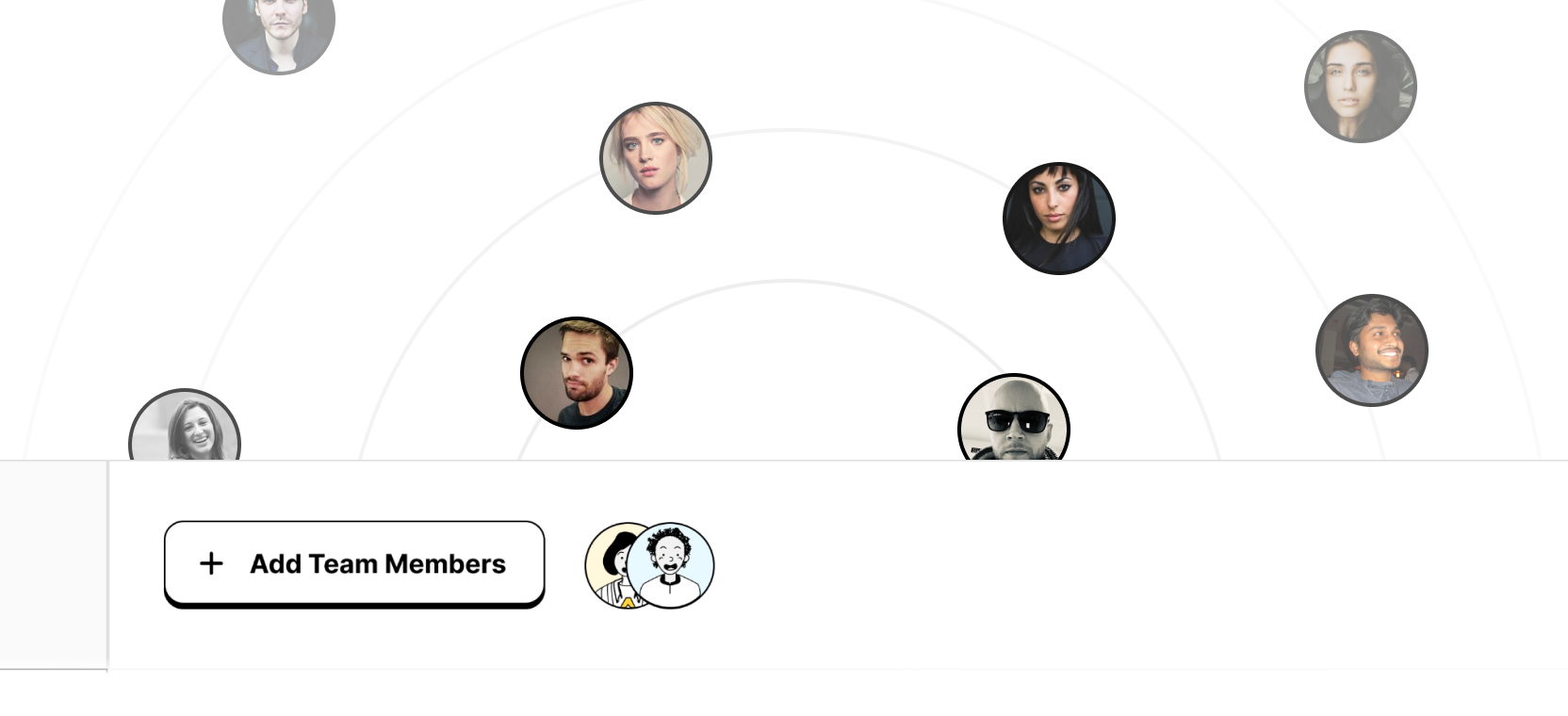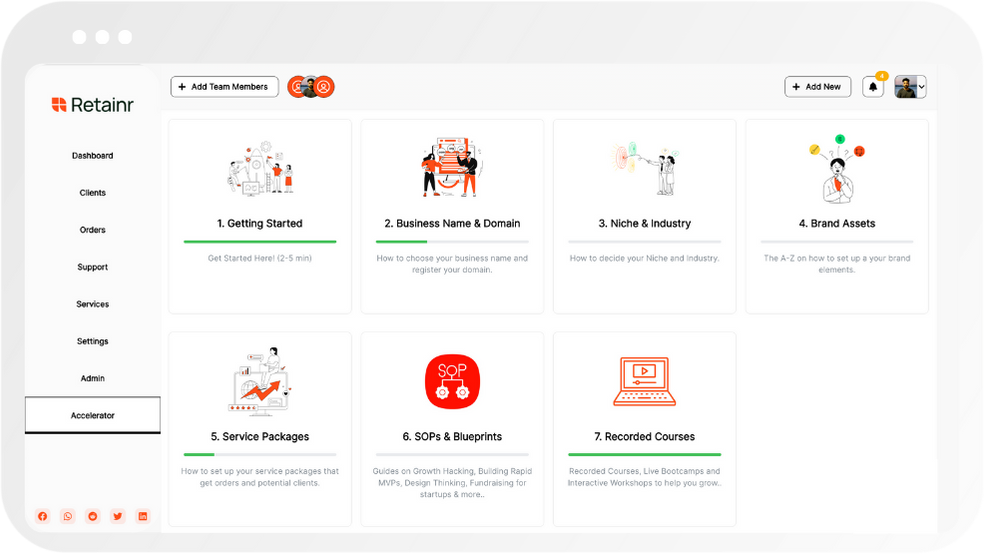
How to Manage Multiple Projects Like a Pro
Build with Retainr
Sell your products and services, manage clients, orders, payments, automate your client onboarding and management with your own branded web application.
Get Started1. What are the best strategies for managing multiple projects at the same time?
Effective Strategies for Managing Multiple Projects
Managing more than one project can be a daunting task, but with the right approach, it is possible to do so efficiently and effectively. Here are some of the best strategies for managing multiple projects at the same time:
- Prioritize: This is the first and most essential step in project management. Prioritization means identifying the most critical tasks and focusing your efforts on them. You can use tools like Eisenhower Matrix to help you prioritize your work.
- Delegate: If you have a team, make sure you delegate tasks efficiently. Each member should know their responsibilities and deadlines.
- Use Project Management Tools: These can streamline the process of juggling multiple projects. Tools like Trello, Asana, or Microsoft Teams allow you to organize tasks, deadlines, and project milestones in one place.
Table of Project Management Strategies
| Strategy | Description | Examples |
|---|---|---|
| Prioritize | Identifying the most critical tasks and focusing your efforts on them. | Eisenhower Matrix |
| Delegate | Assigning tasks to team members to ensure efficient work distribution. | N/A |
| Use of Project Management Tools | Tools that help organize tasks, deadlines, and project milestones. | Trello, Asana, Microsoft Teams |
Best Practices for Multi-Projects Management
In addition to the general strategies, there are a few best practices that must be followed when managing multiple projects. They include:
- Regular communication: Ensure you maintain regular contact with everyone involved in the projects. This helps to nip challenges in the bud and keep everyone updated on progress.
- Remain flexible: While planning is critical, be ready to adapt to changes in circumstances, needs or priorities.
- Keep organized: Maintain records of every step of each project. This includes the goals, key decisions, and all the changes made along the way.
2. How can I prioritize tasks when managing multiple projects?
Strategies for Prioritizing Tasks
Managing multiple projects is complex without clear prioritization. The first step for task prioritization is defining the project requirements and deadlines. Review the objectives for each project and understand what needs to be completed first. Sometimes, you may need to prioritize the projects with closest deadlines, or the ones that are most important to the company’s strategic direction. If projects have similar levels of urgency and importance, tackle the ones where you have all the resources available first.
- Project A: Tightest deadline, but low importance
- Project B: Important but loose deadline
- Project C: Important, tight deadline, resource availability issue
- Project D: Low importance, loose deadline, all resources available
After setting the project priorities, find out the tasks that need to be accomplished under each project. Understanding the dependency of tasks is important. Some tasks can’t start until others have been finished while others can be done simultaneously. The Eisenhower Box approach can be quite helpful here. It helps categorize tasks based on their urgency and importance.
| Urgent | Not Urgent | |
|---|---|---|
| Important | Tasks that must be done immediately (Crisis, Deadline driven projects) | Tasks that should be planned for (Strategic goals, Relationship building) |
| Not Important | Tasks that should be delegated (Interruptions, Meetings) | Tasks that should be dropped (Time wasters, Not aligned to goals) |
Task prioritization is a continuous process. As new tasks come up, assess their impact on the current priorities and shuffle them if required. Keeping a flexible schedule will allow you to readjust priorities as needed, and open communication channels will ensure all team members stay updated on the task priorities.
3. What tools can I use to effectively manage multiple projects?
The Use of Project Management Software
One of the most effective tools for managing multiple projects is project management software. The key benefits of using such software include enhanced communication, better delegation, easier file sharing, and advanced task tracking. Popular project management software includes:
- Asana
- Trello
- Slack
- Jira
Utilizing Time Management Tools
When handling multiple projects, effective time management is essential. There are several time management tools available that can be beneficial in creating a work schedule, tracking time spent on tasks, and assessing productivity. Following are some of the best time management tools:
- RescueTime: This tool gives you an accurate picture of how you spend your time to help you become more productive.
- Harvest: Ideal for tracking the time spent on different projects and tasks.
- Todoist: Helps you create to-do lists to manage your projects effectively.
The Importance of Documentation Tools
For managing multiple projects, proper documentation is required. This will keep everything on track and all the stakeholders informed. A comparison of a few documentation tools is shown in the table below:
| Tool | Pros | Cons |
|---|---|---|
| Google Docs | User-friendly, real-time collaboration | needs internet connection to access |
| Confluence | Great for technical documentation, integration with Jira | High learning curve for new users |
| Evernote | Great for note-taking, accessible on multiple devices | Free version has limited features |
4. How can I manage my time effectively when dealing with multiple projects?
Time Management Strategies
Managing time effectively is crucial when dealing with multiple projects. Several strategies, when followed carefully, can maximize efficiency and productivity. Here are some essential tips:
- Prioritize tasks: Start by ranking projects based on their importance, deadline, or the effort required. This helps to tackle the most critical tasks first.
- Set Clear Goals: Define what you want to achieve at the end of each day or week. This provides direction and keeps the focus on the tasks at hand.
- Make Use of Technology: Utilize productivity tools and apps to schedule, organize and monitor project tasks. Some popular options are Trello, Asana, and Google Calendar.
- Time Blocking: Reserve specific time slots for tasks or groups of tasks. This technique helps to prevent multitasking, and enables focusing complete attention on one job at a time.
- Break Large Tasks: Breakdown large tasks into smaller, manageable sections. This reduces overwhelm and creates a smooth work-flow.
The Eisenhower Box
A particularly useful tool for prioritization is the Eisenhower Box. It's a simple decision-making matrix that can be critical in time management when dealing with multiple projects. Below illustrates how tasks can be allocated using the Eisenhower Box.
| Urgent | Not Urgent | |
|---|---|---|
| Important | Do immediately (High Priority Tasks) | Schedule for later (High Value Activities) |
| Not Important | Delegate (Interruptions) | Eliminate (Distractions) |
Setting Deadlines and Reviews
Assigning deadlines for each task and scheduling routine checks, can improve efficiency and prevent delays. It ensures accountability and allows adaptability when unexpected changes occur. Here are some pointers:
- Set Realistic Deadlines: Be sure not to over-promise and under-deliver. It's better to overestimate the time required for a task than to underestimate it.
- Regular Checks: Routine checks help to track progress and rectify any issues early. It's easier to course-correct while in progress, than to rectify a completed task.
- Reserve Time for Unexpected Tasks: Always allocate a proportion of time for unforeseen tasks. This buffer can prevent rescheduling and postponing of tasks and projects.
5. How can I ensure clear communication across multiple projects?
Strategies for Clear Communication
Effective communication is crucial when managing multiple projects. Here are some strategies that can ensure clear communication: firstly, determining and communicating key expectations and project scope with everyone involved. Secondly, using project management tools to streamline communication. Thirdly, scheduling regular team meetings to address any concerns. Lastly, actively encouraging team members to share their ideas and giving them the opportunity to communicate openly.
Project management tools can help establish a clear communication process. Applications like Asana, Trello and Slack allow you to create different channels for each project. They also help provide updates, discuss project issues, and maintain transparent communication. Here is a comparison between these tools:
| Tool | Best Use |
|---|---|
| Asana | Project & task management |
| Trello | Workflow visualisation & collaboration |
| Slack | Real-time communication |
Regular team meetings are also a key component in ensuring clear communication across multiple projects. These meetings can serve as a platform to share updates, gauge project progress, identify challenges, and brainstorm solutions. They can also help foster unity within the team, promoting a more efficient and enjoyable working environment.
6. Can you share any tips for staying organized while managing multiple projects?
Organizing Tools and Techniques
There are various tools and techniques that can greatly assist in staying organized. For instance, using project management software or applications like Asana or Trello can help you keep track of all your projects in one place. They provide visual oversight of all tasks, deadlines, and who's responsible for what.
Next, using color-coding can be highly effective. Assign different colors to different projects and use these colors for files, folders, and in your project management software. Also, establish a clear filing system. Digital or physical, keep all related files and folders together and label everything clearly. Stay consistent with your system across all projects.
- Project management software (Asana, Trello, etc.)
- Color-coding
- Clear filing system
Effective Time Management
Time management is paramount in successfully dealing with multiple projects. One useful strategy is time blocking. This involves scheduling specific time slots for different tasks or projects each day, which can boost focus and productivity.
Then there's the Pomodoro Technique, where you work for a set amount of time (usually 25 minutes), then take a short break before starting the next 'Pomodoro'. This can enhance concentration and reduce fatigue. It's enough to have a simple timer to implement this technique. And lastly, don't forget to allocate some time for unexpected tasks or emergencies.
- Time blocking
- Pomodoro Technique
- Buffer time for unexpected tasks
Delegating Tasks
If applicable, delegate tasks wherever possible. It can be tempting to try to do everything yourself, especially if you’re managing a small team. However, remember that delegation is essential for scale. Use a simple delegation matrix to decide which tasks to delegate and to whom.
Consider the complexity of the task, the skill level required, and the workload of each team member. Regular check-ins can ensure everything is on track and provide support if needed. Delegation not only reduces your workload but also empowers your team and builds trust.
| Task Complexity | Skill Level Required | Team Member Workload |
|---|---|---|
| High | High | Low |
| Medium | Medium | Medium |
| Low | Low | High |
7. How can I keep track of progress on multiple projects?
Using Software Tools for Progress Tracking
Technology can be incredibly beneficial when it comes to managing and tracking progress on multiple projects. A variety of project management software tools are available, such as Monday.com, Trello, or Asana. These platforms provide visual representations of project progress, allow for task delegation, set deadlines, and send reminders. Users can typically customize their view to focus on one project at a time or get an overview of multiple projects simultaneously.
Applying Key Performance Indicators (KPIs)
Consider implementing Key Performance Indicators (KPIs) to measure progress. KPIs can be project-specific - based on the unique objectives and parameters of each project, or universal across all projects - enabling comparison and analysis. Examples of KPIs include tasks completed, deadlines met, budget status, and stakeholder satisfaction. KPIs should be tracked and reviewed regularly.
| KPIs | Project 1 | Project 2 | Project 3 |
|---|---|---|---|
| Tasks completed | 75% | 60% | 40% |
| Deadlines met | 100% | 90% | 80% |
| Budget status | Within Budget | Over Budget | Under Budget |
| Stakeholder satisfaction | High | Moderate | Low |
Maintaining Regular Reports and Reviews
Regular reports and reviews are essential for keeping track of progress on multiple projects. This allows project managers and teams to stay updated on project status, identify bottlenecks early, make necessary adjustments, and stay ahead of deadlines. Reports can be daily, weekly, or monthly, depending on the project's complexity, stakeholder preferences, and organizational practices.
8. How to handle risks and uncertainties when managing multiple projects?
Identifying and Assessing Risks
Managing multiple projects inevitably involves dealing with risks and uncertainties. It is crucial to identify potential risks at the beginning of any project. These could include scope changes, resource shortages, or scheduling conflicts. You should assess each risk based on its probability of occurrence and potential impact on the project. This process is often facilitated through a risk assessment matrix. Below is a basic example:
| Risk | Probability | Impact |
|---|---|---|
| Scope Changes | High | High |
| Resource Shortages | Medium | High |
| Scheduling Conflicts | Low | Medium |
Developing a Risk Management Plan
The next step after identifying and assessing risks is to develop a risk management plan. This should outline clear strategies for mitigating each potential risk. Strategies may include:
- Allocating additional resources to high-risk areas
- Implementing contingency plans for potential scope changes
- Building flex time into project schedules to accommodate any unexpected delays
It's important to communicate this plan to all stakeholders so that everyone is aware of potential risks and prepared to respond appropriately.
Reviewing and Updating the Risk Management Plan
The risk management plan should not be a static document. Instead, it must be continually reviewed and updated as the projects progress and as new risks emerge. Regular risk management meetings can be helpful to review the plan and make necessary amendments. These may involve:
- Re-prioritizing risks based on new developments
- Developing new mitigation strategies for emerging risks
- Updating the risk assessment matrix with more current information
By actively managing risks and uncertainties in this way, you can greatly increase your ability to successfully manage multiple projects.
9. What skills are needed to successfully manage multiple projects simultaneously?
Key Skills Required
Managing several projects simultaneously is not something that just anyone can do. It necessitates a unique set of abilities that are critical to ensuring that things run smoothly and deadlines are met. Here is a broad outline of the skills required:
- Time Management: The ability to prioritize tasks and use time effectively is fundamental. Effective time management involves planning, setting goals, and making the best use of available resources.
- Organization: To handle various tasks effectively, one needs superior organizational skills. This includes setting objectives, scheduling, task management and efficient use of resources.
- Problem Solving: Project managers frequently encounter complications and problems that they must address. Successfully mitigating and resolving issues requires advanced problem-solving abilities.
- Communication: Excellent communication skills, both verbal and written, are crucial for explaining ideas, giving instructions, and providing feedback. Communication keeps everyone on the same page and enables effective collaboration.
Technical Proficiencies
In addition to general skills, certain technical proficiencies are vital for successfully managing multiple projects. A background in the particular field of the projects is beneficial, but project managers must also be proficient in a range of technical skills and software used for project management. Let's look at some of the technical proficiencies required:
| Technical Proficiency | Description |
|---|---|
| MS Project | It's a project management software program developed and sold by Microsoft designed to assist project managers in developing plans, assigning resources to tasks, tracking progress, managing budgets, and analyzing workloads. |
| Excel | A spreadsheet program used for simple calculations, data management, financial analysis, and more. |
| Slack | An instant messaging platform that keeps everyone updated and information flowing. |
Leadership Skills
Beyond the hard skills, being a successful project manager also requires certain soft skills. Leadership skills are amongst the most important. Some of the key leadership skills required include:
- Decision Making: The ability to make sound decisions in a timely manner is essential for project management.
- Delegation: An effective leader knows how to delegate tasks appropriately based on team members' skills and strengths.
- Team Building: Building a cohesive, motivated team is a significant part of a project manager's role.
10. How can I delegate tasks efficiently across multiple projects?
Understanding Your Team
Efficient delegation calls for a thorough understanding of your team’s strengths, weaknesses, and capacities. Monitor each individual's skill set, their current workload and their availability. Remember these key points:
- Assign tasks based on each team member's skills and experience
- Do not overload any team member with too many tasks
- Ensure there is even distribution of tasks across the team
| Name | Skills | Current Workload | Availability |
|---|---|---|---|
| John Doe | Graphic designing, coding | 3 Tasks | Available |
| Jane Smith | Content writing, Research | 5 Tasks | Available |
Utilizing Project Management Tools
Use project management tools to delegate tasks virtually and monitor the progress of each task. Tools like Slack, Trello, and Asana can be used for task delegation, setting deadlines, tracking progress, and for effective communication. Here’s the checklist:
- Use the tool that suits your team's working style
- Create clear, comprehensive task descriptions
- Always set achievable deadlines
Delegating tasks efficiently across multiple projects not only enhances productivity but also fosters team development and builds trust within the team. To be efficient, remember, it's crucial to communicate effectively and ensure your team is comfortable with their workload.
Conclusion
Mastering Multiple Projects Management
Managing multiple projects simultaneously can be quite challenging. However, you can easily navigate through with the right skills and tools. This includes prioritizing projects, excellent communication, breaking down tasks, tracking progress, and leveraging project management software like Retainr.io.
Optimize Your Workflow with Retainr.io
Retainr.io is an all-in-one, white label software application designed to streamline and simplify your work process. With features that allow you to manage clients, orders, and payments with your own branded app, handling multiple projects becomes a breeze.
Prioritize Projects
Prioritizing is the first step to successful multiple project management. Not all projects are created equal. Some have tighter deadlines; others require more resources. Recognize the importance and urgency of each project and allocate resources accordingly. Consider using a project management tool like Retainr.io to help you organize your priorities.
Breakdown Tasks
Breaking down projects into manageable tasks is crucial. This makes the project feel less overwhelming and makes tracking progress simpler. Retainr.io provides a feature that enables you to list out all the minor tasks needed to accomplish a project.
Keep Track of Your Progress
Another key to managing multiple projects is to monitor progress consistently. Keep track of what has been done and what is still to be done. Retainr.io gives you a clear overview of where your projects stand, enhancing efficiency and productivity.
Good Communication is Key
Keeping open lines of communication with your team and clients is essential especially when dealing with multiple projects. Retainr.io offers a streamlined channel for communication ensuring that all important messages are passed across effectively.
In conclusion, although managing multiple projects can be daunting, with the right skills and the aid of robust software like Retainr.io, you can handle it like a pro. Try Retainr.io today and elevate your project management skills.
Boost Your Agency Growth
with Retainr Accelerator
Uncover secrets, strategies, and exclusive blueprints to take your agency's growth to the next level — from marketing insights to effective presentations and leveraging technology.

SOPs, Cheatsheets & Blueprints
Leverage 50+ SOPs (valued over $10K) offering practical guides, scripts, tools, hacks, templates, and cheat sheets to fast-track your startup's growth.
Connect with fellow entrepreneurs, share experiences, and get expert insights within our exclusive Facebook community.
.jpg)

Join a thriving community of growth hackers. Network, collaborate, and learn from like-minded entrepreneurs on a lifelong journey to success.

Gain expertise with recorded Courses, Live Bootcamps and interactive Workshops on topics like growth hacking, copywriting, no-code funnel building, performance marketing and more, taught by seasoned coaches & industry experts.

.jpg)

.jpeg)


